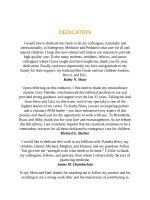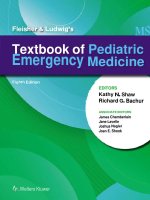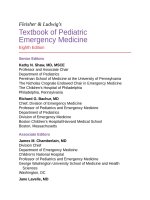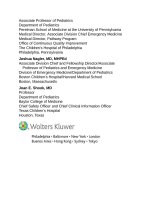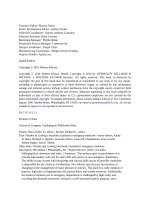Pediatric emergency medicine trisk 0337 0337
Bạn đang xem bản rút gọn của tài liệu. Xem và tải ngay bản đầy đủ của tài liệu tại đây (44.09 KB, 1 trang )
gas volume–related issues during air transport. For the reasons noted above,
hypoxia can also be a major issue. This can usually be overcome with addition of
100% FiO2 —unless the patient’s baseline is hypoxia at lower altitudes while on
100% oxygen. Positive end-expiratory pressure is usually not effective in
reversing the hypoxemia that occurs secondary to an increase in altitude.
Most air transports, however, do not reach an altitude or experience barometric
pressure changes that will greatly influence the patient’s care. Helicopter
transport routinely occurs at 1,000 ft or less above ground level, although this
may not be the case in mountainous regions where traversing high-altitude peaks
may be necessary or when operating under Instrument Flight Rules (IFR). FW
transport aircraft are usually pressurized, meaning that they can simulate the
atmospheric pressure of a lower environment. Air pressure in these aircraft is
often set at a level of 5,000 to 8,000 ft, which can, however, still lead to a
significant increase in gas volume. Opportunities for achieving higher ambient
pressure (lower altitude pressure) may be available, depending on the limitations
of the particular aircraft. If an aircraft cannot be pressurized to a higher pressure,
one can consider flying at a lower altitude. Trade-offs include increased
turbulence, speed restrictions, and increased fuel consumption.

